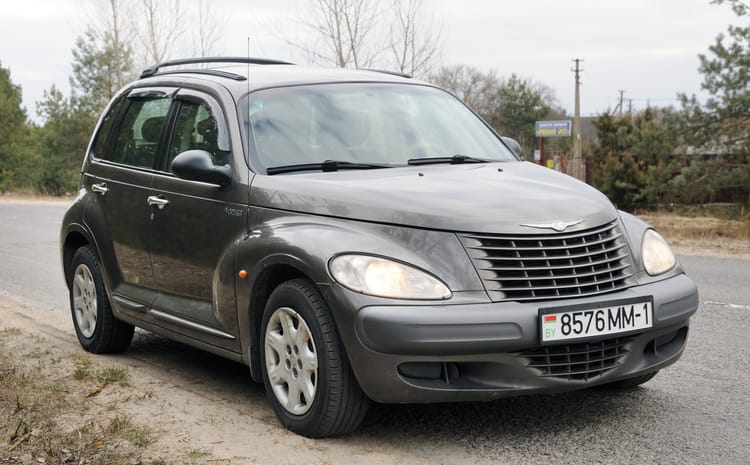Cruising Down Memory Lane: A Look Back at the Chrysler PT Cruiser

The Chrysler PT Cruiser, a car that sparked much debate during its production run, holds a unique place in automotive history. Introduced in 2001, this compact car combined retro aesthetics with modern functionality, carving a niche for itself in a market dominated by conventional sedans and SUVs. This article delves into the PT Cruiser's origins, design, performance, criticisms, and lasting legacy.
A Nostalgic Inspiration
The PT Cruiser's story begins in the late 1990s. Chrysler, seeking to revive lagging sales, decided to capitalize on the public's growing fascination with retro design. The Plymouth Prowler, a neo-classic roadster introduced in 1997, proved moderately successful. Taking inspiration from this concept, designer Bryan Nesbitt sketched a vehicle that paid homage to the flamboyant curves and chrome accents of 1930s American cars. The PT Cruiser, named for "Personal Transport," was born.
A Head-Turning Design
The PT Cruiser's design was undoubtedly its most striking feature. It borrowed heavily from pre-war automobiles, with a prominent grille, rounded fenders, and a two-box silhouette reminiscent of woodies. The car's unconventional looks divided opinions. Some hailed it as a refreshing departure from the monotony of contemporary car design, appreciating its playful and quirky character. Others criticized its proportions, finding it awkward and boxy. Regardless of opinion, the PT Cruiser undeniably turned heads and sparked conversations wherever it went.
Under the Hood of the PT Cruiser
While the PT Cruiser's design stole the show, its performance was more conventional. It was offered with a range of four-cylinder engines, ranging from a fuel-efficient 1.6L to a more powerful 2.4L turbocharged option. These engines delivered decent fuel economy for the time but weren't known for their acceleration. The PT Cruiser was primarily a front-wheel-drive vehicle, with an optional all-wheel-drive configuration available in later years.
Beyond the Looks: Functionality and Features
Despite its retro appearance, the PT Cruiser offered a surprisingly spacious interior. The tall roofline provided ample headroom for passengers, and the hatchback design ensured good cargo capacity. The car was available in various trim levels, offering features like power windows, locks, a sunroof, and a premium sound system. While not a luxury car, the PT Cruiser provided a comfortable and convenient driving experience for a small family or group of friends.
A Target of Criticism
The PT Cruiser wasn't without its flaws. Critics pointed out its quirky handling due to its high center of gravity. The car's design, while visually interesting, also hampered rearward visibility. Additionally, some argued that its retro looks felt gimmicky and lacked the authenticity of a true classic car. As the car aged, concerns arose regarding parts availability and potential repair costs.
The PT Cruiser's Legacy
Despite the criticisms, the PT Cruiser enjoyed a successful production run, selling over 1.3 million units during its nine-year lifespan. It carved a niche for itself in the market, attracting a loyal following who appreciated its unique blend of style and practicality. While production ceased in 2010, the PT Cruiser continues to be a popular choice in the used car market, especially among those seeking an affordable and distinctive vehicle.
A Final Look: More Than Just a Retro Fad
The Chrysler PT Cruiser's story is a testament to the power of bold design. It dared to be different in a market saturated with conventional cars. While not perfect, the PT Cruiser offered a unique driving experience and a touch of nostalgia for a bygone era. Whether loved or loathed, the PT Cruiser left an undeniable mark on the automotive landscape, reminding us that cars can be more than just means of transportation; they can be conversation starters and expressions of personal style.
